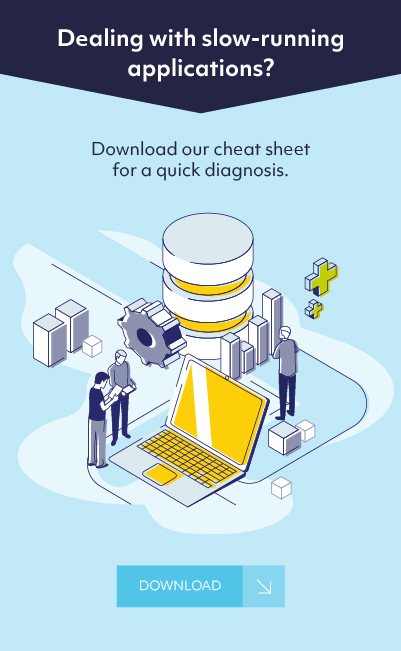Server performance is the heartbeat of your business. Whether you’re running critical enterprise applications, customer-facing platforms, or internal systems, a slow or unstable server can hinder productivity, frustrate users, and cost your business. If you’ve been wondering how or how often to review server performance, you’re in the right place.
This guide is designed for IT leaders, DevOps teams, and business decision-makers who want to keep their systems running at peak performance, without the guesswork.
What Does It Mean to Review Server Performance?
Reviewing server performance means systematically checking how well your servers are functioning against key metrics. These metrics typically include:
- CPU utilization: Is your processor handling workloads efficiently?
- Memory (RAM) usage: Are applications consuming too much memory?
- Disk I/O: Are read/write operations slowing down performance?
- Network throughput: Are there bandwidth bottlenecks?
- Database responsiveness: Is data being retrieved and processed quickly?
These checks can apply to on-premises servers, cloud-based infrastructure, or hybrid environments.
Why Regular Server Performance Reviews Matter
Skipping regular server reviews is like skipping oil changes on your car: it works, until everything grinds to a halt. Here’s why performance reviews are essential:
- Prevent Downtime: Proactive monitoring catches issues before they spiral into outages.
- Optimize Resources: You can identify and eliminate wasted compute, storage, or bandwidth.
- Enhance User Experience: Faster systems mean happier end users and fewer complaints.
- Strengthen Security: Performance anomalies can indicate cyber threats or misconfigurations.
Without regular reviews, you risk slow-loading applications, transaction failures, and mounting IT costs.
How Often Should You Review Server Performance?
A good rule of thumb is to review server performance quarterly for most enterprise applications. However, your review frequency should align with:
- Business criticality: Mission-critical systems may require monthly or continuous monitoring.
- Compliance requirements: Regulated industries may need stricter review cycles (e.g., HIPAA, SOC 2).
- Environment changes: Major upgrades, migrations, or increased user load call for immediate review.
If your team can’t remember the last time you reviewed server performance, you’re already overdue.
How to Conduct an Effective Server Performance Review: Step-by-Step
- Establish a Baseline: Use historical performance data to set expectations.
- Monitor Key Metrics: Leverage tools like Nagios, New Relic, or AWS CloudWatch.
- Identify Bottlenecks: Look for CPU spikes, memory leaks, or database lags.
- Take Corrective Action: This could mean patching software, resizing servers, tuning databases, or reallocating resources.
- Document & Schedule Next Review: Don’t leave it to chance, make it part of your department’s calendar.
Key Metrics to Review
To get a full picture of server health, focus on:
- CPU Utilization: High or spiking CPU can indicate inefficient applications, excessive background processes, or the need for more compute power.
- Memory Usage: Persistent high memory usage can cause performance degradation or crashes.
- Disk I/O: Slow disk read/write speeds point to storage limitations or misconfiguration.
- Network Latency: Packet loss, slow response times, or bandwidth saturation affect application performance.
Common Warning Signs
You may need to review server performance more urgently if you notice:
- Unusual spikes in resource consumption
- Slow application or website response times
- Frequent timeouts or failed transactions
- Increased frequency of system restarts or errors
When possible, integrate monitoring with real-time alerts so your team can react to issues that arise more quickly. Don’t know where to get started? It might be time to bring in data experts that can help.
When to Bring in an Expert
Some server issues run deeper than surface-level metrics reveal. If you’re seeing chronic slowdowns, inconsistent performance, or security red flags, it’s time to call for help.
At Solvaria, our database health assessments go beyond the basics. We help organizations identify hidden risks, optimize system performance, and ensure alignment with business goals.
Regularly reviewing server performance isn’t just IT best practice, it’s smart business. A healthy, high-performing server environment:
- Keeps your operations running smoothly.
- Improves customer and employee satisfaction.
- Reduces unplanned downtime and costly outages.
If you’re ready to take the guesswork out of server performance management, reach out to the Solvarians for a no-pressure consultation.
FAQs
Q: How do I review my server performance?
A: Start by monitoring key metrics such as CPU usage, memory consumption, disk I/O, and database response times using performance monitoring tools.
Q: What are the most important server performance metrics?
A: CPU utilization, memory usage, disk read/write speeds, network throughput, and application/database responsiveness are essential metrics to track.
